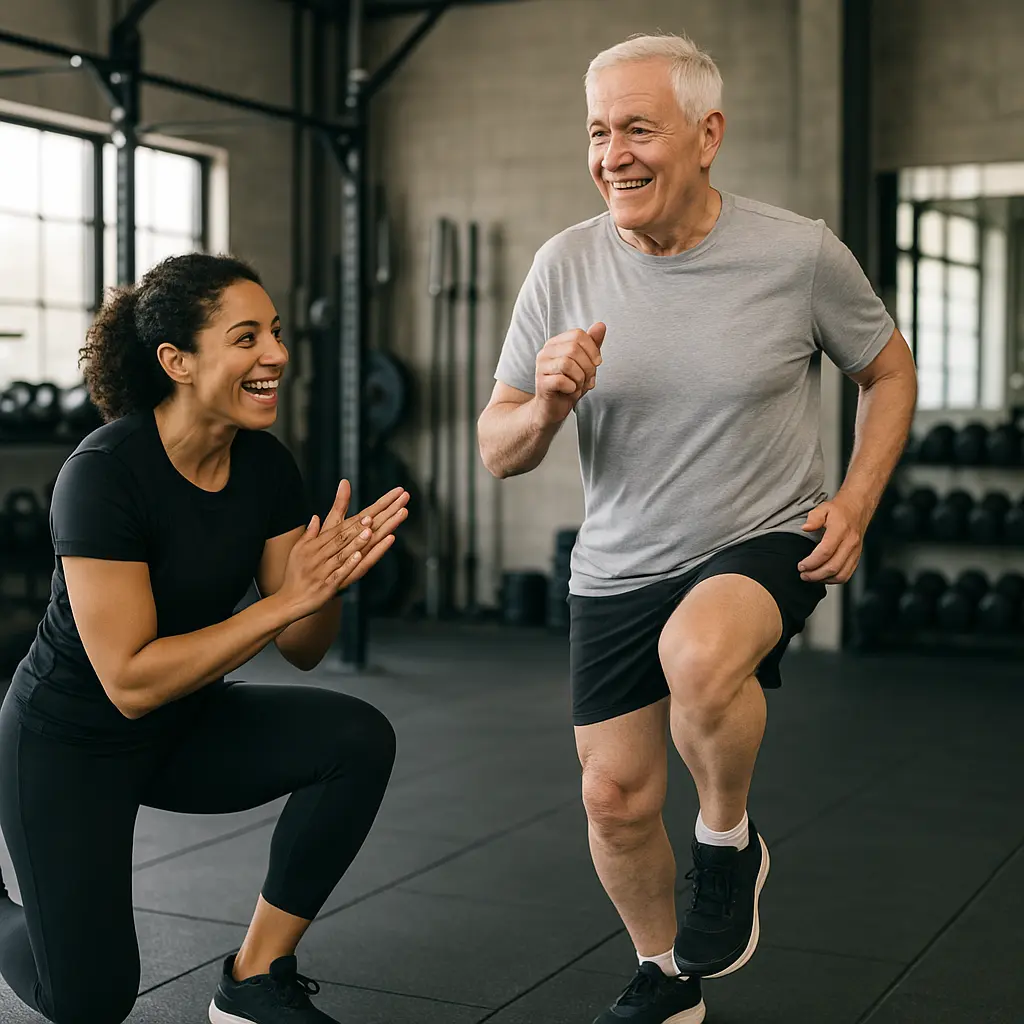Quick Answer: Older adults can safely begin HIIT with medical clearance, proper warm-up, low-impact intervals, gradual progression, recovery days, balanced nutrition, and attention to form. This article offers a full 2000+ word roadmap with modifications, sample workouts, nutrition, recovery strategies, common mistakes, and FAQs.
1. Why HIIT Benefits Older Adults
HIIT improves cardiovascular health, insulin sensitivity, bone density, and muscle mass—areas often declining with age. Even brief intervals stimulate growth hormone and improve metabolic function in seniors.
- Boosts VO₂ max faster than steady cardio
- Preserves or builds lean muscle
- Enhances bone density through impact/movement
- Efficient: 15–20 minutes yield results
2. Safety First: Medical Clearance & Screening
Before starting, older adults should:
- Get doctor clearance—especially with heart disease, joint issues, hypertension, diabetes, or medications.
- Perform baseline testing: resting HR, BP, functional movement screening.
- Discuss medications affecting heart rate response.
Assess readiness using the PAR-Q+ questionnaire.
3. Warm-Up & Mobility Warm-Up Essentials
Warming up for 10 minutes primes the body and prevents injury:
- 5 minutes brisk walking or stationary bike
- Dynamic leg swings (10 each side)
- Arm circles and shoulder mobility
- Hip openers and ankle mobility
- Practice form for planned movements (e.g., bodyweight squats)
4. Low‑Impact Interval Modifications
Start with low-impact options:
- March in place high knees
- Stationary bike intervals
- Seated punch or paddle movements
- Step-ups on low platform
- Low-impact jumping jacks or skaters
Use intervals such as 20 seconds hard effort, 40 seconds rest, repeat 6–8 times.
5. Sample 4‑Week Beginner HIIT Plan
Week 1 – Low Volume
- Warm-up → 5× (20 s effort / 40 s rest) → cool-down
Week 2 – Add Reps
- 6× intervals, increase dynamic warm-up
Week 3 – Increase Work Duration
- 8×(30 s/30 s) intervals, cool-down walk
Week 4 – Include Strength Elements
- 8×(30 s effort + 10 s bodyweight squat + 20 s rest)
Train 2–3 days per week with rest days between sessions.
6. Progression Strategies over Time
- Shift from 1:2 to 1:1 work/rest ratio
- Add resistance bands or light dumbbells
- Increase session count to 3×/week
- Introduce low-impact plyometrics if joints can handle
7. Nutrition for Older HIIT Participants
- Protein: 1.2–1.6 g/kg bodyweight to support muscle repair
- Carbohydrates: prioritize around workout (30–50 % of daily intake)
- Fats: include omega-3 rich foods to reduce joint inflammation
- Hydration: 2–3 L water per day, electrolyte support if sweat-heavy
Older adults have lower protein absorption—spread evenly across meals.
8. Recovery & Rest Days
- Full rest or very light movement one day after HIIT
- Use foam rolling, massage, mobility work
- Prioritize sleep—7–9 hours each night
- Use compression garments or ice baths if soreness persists
9. Tracking Progress & Adjustments
- Keep a log of workouts, perceived exertion (RPE), interval counts
- Track resting heart rate and blood pressure weekly
- Re-measure functional abilities monthly
- If RPE drops below 6/10, progress the workout
10. Common Mistakes to Avoid
- Skipping medical clearance or ignoring aches
- Using high impact too early—leads to joint strain
- Poor form during intervals—risking falls
- Not recovering—back-to-back HIIT without rest
- Poor nutrition—under fueling hinders performance and recovery
11. FAQs
Is HIIT safe for someone in their 60s or 70s?
Yes, if approved by a doctor and modified appropriately. Many older athletes complete HIIT safely when progression and form are prioritized.
How often should older adults do HIIT?
2–3 sessions weekly with at least one rest day between sessions is ideal to avoid overtraining.
Can HIIT help with mobility and balance?
Yes. HIIT often includes balance and coordination drills that improve proprioception and reduce fall risk.
What’s the best alternative if HIIT feels too intense?
Try moderate intensity interval training (MIIT): 1 min brisk, 1 min easy walk, repeat for 20 min.
